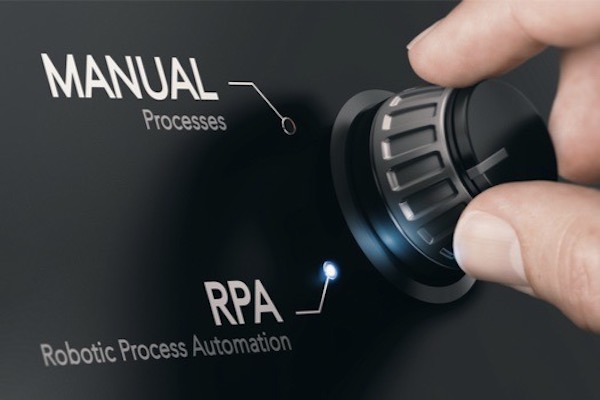Published on the 12/04/2023 | Written by Heather Wright

While NZ roadmap work kicks off
Resources, agriculture, transport, medical science and renewables and low emission technologies are among the areas identified as potential targets for increased robotics adoption in a new Australian discussion paper.
The newly released discussion paper is setting the foundations for a potential National Robotics Strategy for Australia and comes hard on the heels of the Albanese government’s flagship $15 billion manufacturing fund passing through the Senate. That fund includes $1 billion for ‘critical technologies’, such as robotics, alongside the likes of AI and quantum computing.
“Countries that have invested more in robotics have experienced higher levels of employment growth.”
Ed Husic, Minister for Industry and Science, says the fund can provide investment support for the onshore development of robotics.
“Automation technologies, including robotics, provide an opportunity to add between AU$170 billion to AU$600 billion per year to Australia’s GDP by 2030,” Husic says.
“It’s also good for jobs, with research showing countries that have invested more in robotics have experienced higher levels of employment growth.”
The report also notes the ability of robotics to generate social and environmental benefits as well, saying industries have adopted robots to work alongside humans to create safer and more productive work environments, from reducing pesticide use in agriculture, to improving asset management and helping respond to bushfires.
But while Australia might be a ‘world leader’ in the adoption of whole-of-system automation solutions in resources and mining, and a leader in remote operations in mining and space, it lags in other areas of the economy.
When it comes to industrial robots, typically used in manufacturing, Australia’s adoption ranked just 30th globally in 2021.
The report aims to identify ways to resolve some of the barriers to adoption.
Among the challenges cited are a low level of awareness across some sectors of robotics and automation’s advantages and a tendency to import well-known solutions rather than working with a local manufacturer.
And there are short term costs and risks for companies when established business processes are disrupted to adopt new processes and technologies – something the report notes can be a ‘significant’ barrier to adoption particularly for SMEs.
Challenges in commercialising innovations is also an issue. Australia’s venture capital investment in advanced robotics is ranked seventh internationally, according to the Department of Industry, Science and Resources, but that’s still only a fraction of leaders such as the US, China and Israel.
“This leads to lower levels of commercialisation, with Australia ranked 14th in patent filing.”
Husic, however, says Australia ‘has all the ingredients to grow our robotics industry – world-class research institutions, a highly skilled workforce and favourable business conditions’.
Plus, of course, that National Reconstruction Fund, which will provide loans, equity and guarantees across the seven priority areas, including critical technologies.
Across in New Zealand, robotics are also in focus again. Hin Lim, chair of New Zealand Robotics, Automation and Sensing (NZRAS) and senior lecturer of mechatronics engineering at the University of Waikato, told iStart NZRAS is starting to discuss the possibility of a new roadmap for New Zealand, to be developed with New Zealand innovation agency, Callaghan Innovation.
NZRAS developed a roadmap back in 2020, noting the potential impacts across a broad range of sectors including agriculture, aquaculture, horticulture and forestry, manufacturing, consumer and professional services, construction and healthcare.
That report suggested more than 70 percent of New Zealand’s GDP is, or could in future be, influenced by RAS adoption.
It outlined a number of recommendations, including adjusting policy around the R&D tax incentive to enable RAS products to reach a commercially viable level.
Three years on, Lin says the Kiwi RAS ecosystem has strengthened with the help of angel investors’ support and funding support via awards such as E-Tipu.
Back in Australia, where the discussion document is government driven, four key focus areas are in focus: National capability; trust, inclusion and responsible development and use; skills and diversity; and increasing adoption.
National capability includes the need to demonstrate practical use cases to Australian businesses, improve collaboration between research and industry and boost co-ordination across state and federal governments.
A need to attract more local and international investment, especially at the seed and start-up stages is also flagged, along with filling gaps in robotics supply chains, which can hinder Australian companies from scaling up robotic solutions or engaging in end-to-end manufacturing.
Public trust will also be key to the success of the robotics ecosystem, the report says, noting common concerns of robots taking jobs. Industry too, needs to be able to trust that there will be a positive return on their investment.
“Regulatory settings, standards, reliability, interoperability and robust cyber security arrangements can help foster this trust.”
People are more likely to trust the technology when they feel in control, understand it and when adoption is normalised.
“Showcasing positive examples of robotics and automation, including the specific benefits this has had on the workforce, as well as broader social and environmental benefits will help build this knowledge and trust.”
The need for a diverse workforce to develop robotics and automation technology is also highlighted, along with the importance of fostering greater involvement in STEM at all levels of education and providing sufficient opportunity for skilled migrants.
Rounding out the four themes is increasing adoption. While that’s apparently largely an education and awareness problem, the paper also notes the potential role of regulation and standards, saying they can provide certainty to businesses so they have the confidence to use new technologies.
“We have heard from stakeholders that in some instances, standards and regulations have not kept up with technological changes. Legal frameworks and regulations at times do not extend to robotics, leaving businesses using robotics open to increased uncertainty and potential liability. Additionally, some current industry and workplace health and safety standards do not consider robotics in the workplace or address interoperability that would ensure hardware, software and enterprise systems are compatible.”
Consultation closes on 7 May.



























